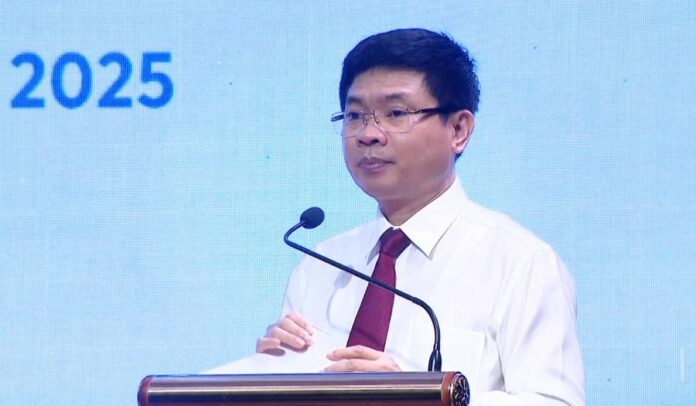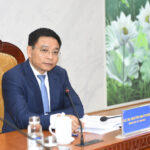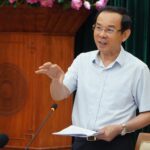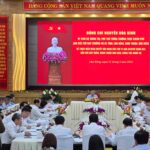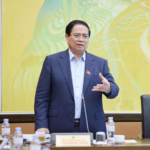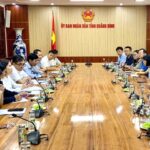On May 24, 2025, a workshop titled “Consultation on Industry-Sector Orientation, Key Products, and Dynamic Regions in the Context of Reorganizing the Development Space of Ha Nam – Nam Dinh – Ninh Binh According to the New Administrative Unit for the Period of 2025–2030, with a Vision Towards 2050” was held in Hoa Lu city, Ninh Binh province. The event was attended by a large number of leaders from the three provinces, along with experts, scientists, entrepreneurs, and investors.
The workshop served as an important forum for exchange and consultation, marking a strategic step in preparing for the construction of the new Party Committee of Ninh Binh province following the merger.
EXPANDING THE DEVELOPMENT SPACE
In his opening remarks, Mr. Truong Quoc Huy, Secretary of the Ha Nam Provincial Party Committee, emphasized that rearranging the administrative units at all levels and building a model of local government with two levels is a major policy of the Party and the State to streamline the apparatus, improve management efficiency, and maximize development potential.
Resolution No. 60-NQ/TW, issued on April 12, 2025, by the 11th Conference of the 13th Central Committee of the Party, agreed to merge Ha Nam, Ninh Binh, and Nam Dinh provinces, with the new province named Ninh Binh, and the political-administrative center located in the current Ninh Binh province.

The merger of the three provinces compensates for limitations in terms of area and population, contributing to a streamlined apparatus and bringing about positive changes in state administrative management. It also helps to increase the economic scale, enhance competitiveness, attract investment, and maximize the potential and strengths of key economic sectors such as tourism, industry, and cultural industry associated with heritage conservation.
Particularly, the expansion of the maritime economic development space is considered a highlight in the region’s development orientation.
Mr. Truong Quoc Huy affirmed, “The contributions of the delegates, economic experts, and scientists will play an important role in orienting the development of industries and sectors, key products associated with spatial planning and dynamic regions in Ha Nam, Nam Dinh, and Ninh Binh according to the new administrative unit. This will serve the construction of the documents for the Congress of the Provincial Party Committee.”
POTENTIAL OF THE MERGED REGION
The workshop’s guiding report, presented by Mr. Dang Khanh Toan, Secretary of the Nam Dinh Provincial Party Committee, highlighted the outstanding achievements of the three provinces in socio-economic development in recent years.
The region has made remarkable progress in renewing its growth model, proactively renewing traditional growth drivers, and developing new ones based on high-tech industries, digital economy, creative economy, circular economy, and heritage economy.
As of the end of 2024, the regional economic scale was estimated at VND 310,282 billion, ranking 11th out of 34 provinces and cities after the merger; budget revenue reached VND 55,018 billion, ranking 6th out of 34; and total export turnover reached USD 17.56 billion, accounting for 12.3% of the Red River Delta region and 4.3% of the country’s total export turnover. This is a testament to the region’s increasingly prominent role in the national economic structure.

Agriculture has been shifting strongly towards an organic and circular model; the program for new rural construction and urban development has achieved many breakthroughs; infrastructure has been synchronously invested in; and rural life has been approaching urban standards. New economic models such as e-commerce, night-time economy, community tourism, creative craft villages, and indigenous agriculture have been rapidly developing.
The green industry and digital technology have made remarkable imprints: green materials and information technology in Nam Dinh; mechanics, automobiles, and event organization and tourism in Ninh Binh; and electronics industry, entertainment industry, and supporting industry in Ha Nam.
Many Vietnamese enterprises have been capable of mastering joint ventures and participating in global value chains, demonstrating their capacity for autonomous development.
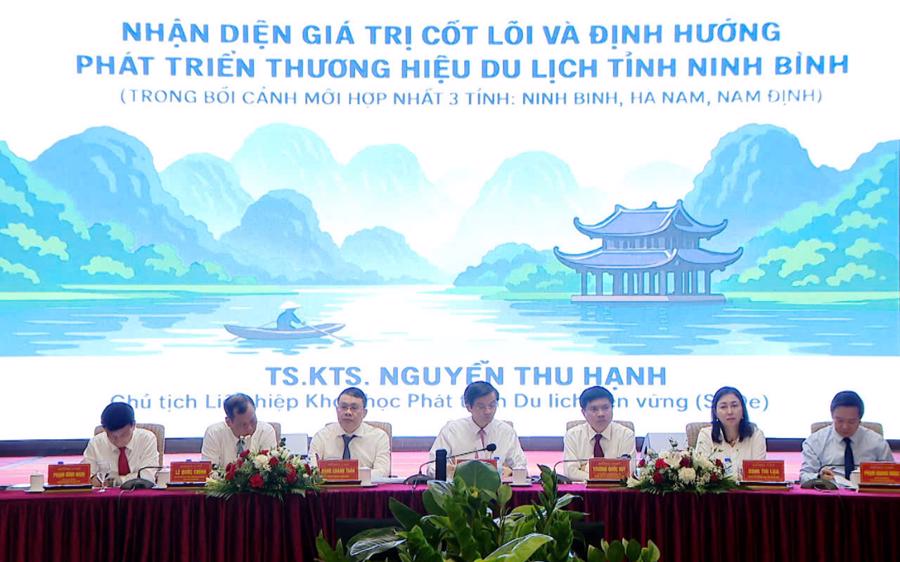
In terms of social security, the poverty rate and near-poor rate in the three provinces are lower than the national average, reflecting the effectiveness of poverty reduction policies and the care for people’s lives.
Defense and security have been maintained, and foreign affairs and international cooperation have been expanded, enhancing the prestige and position of the locality.
Mr. Dang Khanh Toan also emphasized the superior potential of the new Ninh Binh province, with an area of nearly 3,943 km², a population of over 4.4 million people, and a strategic location as the “gateway” to the southern Red River Delta, connecting three major economic regions and lying on many key economic corridors.
The region is rich in cultural and historical traditions, with nearly 5,000 relics, including the Trang An Scenic Complex (the first mixed cultural and natural heritage site of Vietnam) and the intangible cultural heritage of “Mother Goddess Worship in the Three Palaces of the Vietnamese,” recognized by UNESCO.
HERITAGE TOURISM AND MARITIME ECONOMY AS KEY FOCUS
At the workshop, economic experts and scientists shared insightful perspectives on the current challenges and proposed solutions for the development of the merged region.
Associate Professor Dr. Nguyen Thi Thu Phuong and Professor Dr. Dao Xuan Hoc emphasized the enormous potential of the tourism and cultural industries, especially with the rich system of tangible and intangible heritage. The two experts proposed the development of a cultural industry plan associated with local mid- and long-term planning, and the creation of a cultural industry map integrating tourist destinations, cultural and natural heritage sites, and heritage cities.
Prioritizing investment in the cultural industry in terms of industry linkage, region linkage, and international linkage will help this sector become a key economic driver at the national and international levels.
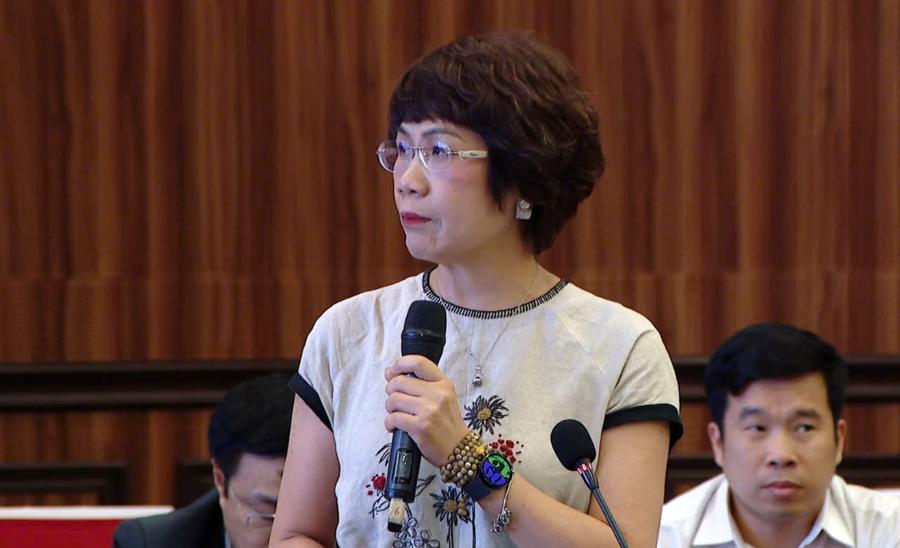
Associate Professor Dr. Tran Dinh Thien stated that the three provinces are on a fast development track and need to turn pressure into motivation. He affirmed the necessity of a well-founded and long-term planning approach, along with investment in the development of infrastructure for high-tech industries and maritime economic zones.
Focusing on training high-quality human resources and integrating digital technology and artificial intelligence is also a key factor in building this region into an international-standard human resource training center.
Dr. Nguyen Duc Toan, Director of the Vietnam Sea and Island Department, and Architect Tran Ngoc Chinh shared their views on the potential for maritime economic development, especially with the long coastline of Nam Dinh and Ninh Binh.
The experts proposed the development of sustainable sea tourism and services, modern and green maritime logistics, sustainable aquaculture, and renewable energy. The strategy of developing a coastal economic corridor along the route of Quang Ninh – Hai Phong – Thai Binh – Nam Dinh – Ninh Binh was considered important.
In addition, the experts emphasized the development of high-tech industries with an industrial ecosystem mindset, growth based on science and technology, innovation, and digital transformation.
The key solution is to use research institutes and universities as a driving force to promote the formation of enterprises, commercialize innovative ideas, and invent and patent inventions.
Regarding agriculture, the opinions converged on the need to shift to an ecological, high-tech, and multi-value agriculture model, not only ensuring food security but also protecting the environment, landscape, and responding to climate change. Rural areas need to preserve and promote cultural and agricultural heritage values, along with planning rural and craft village areas associated with tourism development.
VISION TOWARDS 2050
In his concluding remarks, Mr. Doan Minh Huan, Secretary of the Ninh Binh Provincial Party Committee, emphasized three core points in the strategic orientation for the development of the new Ninh Binh province.
First, comprehensively identify the intangible and tangible potential, dynamic advantages and static advantages of the three provinces. Especially, dynamic advantages are based on the mindset and readiness of the new province, along with the transformation in the mindset of the leadership team, which will create a synergistic force to overcome the limitations of geographical space and old mindset.

Second, restructure the dynamic regions for development and address the relationship between urban and rural areas when forming new development corridors. The urgent task is to review, adjust, supplement, and merge the planning of the three provinces, inheriting and continuing the old planning but with a new mindset, creating a more open development space.
Third, clearly define the role and position of the new Ninh Binh province in the Red River Delta region, in the urban network, especially with the super-cities of Hanoi and Hai Phong, as well as in the national territorial structure and at the international level. Ninh Binh is not only the southern gateway to the capital but also the outlet for the North Central region when entering the Red River Delta and heading to the northern border.
By 2035, the new Ninh Binh province is envisioned to become a centrally-run city with the status of a counterpart city, not a satellite or counterweight city, but a city that complements the shortcomings of other super-cities. Ninh Binh will diversify its development in areas such as tourism, ecological logistics, entertainment industry, resorts, education, and science and technology, reaching international standards.
Samsung Reiterates Tax Refund Proposal to the Ministry of Finance for Samsung HCMC CE Complex in Ho Chi Minh City
Samsung Group is the largest foreign investor in Vietnam, employing approximately 100,000 Vietnamese citizens. The company’s significant presence in the country has had a profound impact on the local economy, creating a ripple effect of opportunities and contributing to the nation’s thriving business landscape. With its cutting-edge technology and innovative spirit, Samsung has not only boosted Vietnam’s economic growth but also played a pivotal role in elevating the country’s reputation as a desirable investment destination.
“In Extraordinary Times, Extraordinary Measures Are Needed”
In challenging times, developed nations opt for conservative growth targets. To buck this global trend and achieve ambitious growth, we require innovative solutions. Prime Minister Pham Minh Chinh asserts that “in these extraordinary times, we must adopt extraordinary measures, adapting with agility and efficiency.”

